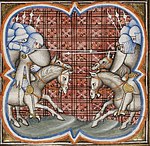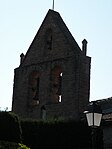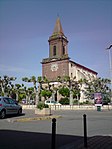Le Muretain Agglo
Agglomeration communities in FranceHaute-Garonne geography stubsIntercommunalities of Haute-Garonne
Le Muretain Agglo is the communauté d'agglomération, an intercommunal structure, centred on the city of Muret. It is located in the Haute-Garonne department, in the Occitanie region, southern France. It was created in January 2017. Its seat is in Muret. Its area is 319.8 km2. Its population was 120,348 in 2017, of which 24,945 in Muret proper.
Excerpt from the Wikipedia article Le Muretain Agglo (License: CC BY-SA 3.0, Authors).Le Muretain Agglo
Chemin de la Côte de Bétance, Muret
Geographical coordinates (GPS) Address Nearby Places Show on map
Geographical coordinates (GPS)
| Latitude | Longitude |
|---|---|
| N 43.45 ° | E 1.3333333333333 ° |
Address
Chemin de la Côte de Bétance
Chemin de la Côte de Bétance
31600 Muret
Occitania, France
Open on Google Maps









